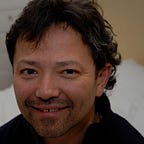Lines of Flight 3
The Beats
Existential Bohemianism
Modern counterculture comes to fruition with the Beats, who in turn, took their cue from the Bohemians and the Existentialists.
After the war, Sartre and Camus transferred their activities in the French resistance to the context of a cultural movement, and the Beats joined in.
Although steeped in socialist thinking, the Existentialists turned away from Cold War socialism, and emphasized freedom of the individual, a free-thinking and expressive socialism led by artists and the avant-garde who collectively had a sense they were empowered to re-think society.
The Beat Generation embraced this existential bohemianism and carried it into every aspect of post-war 1950s culture:
… the only people for me are the mad ones, the ones who are mad to live, mad to talk, mad to be saved, desirous of everything at the same time, the ones who never yawn or say a commonplace thing, but burn, burn, burn like fabulous yellow roman candles exploding like spiders across the stars and in the middle you see the blue centerlight pop and everybody goes “Awww!” (Kerouac, On The Road)
Comprehensive Experimentation
The Beat Generation began as a literary movement led by Jack Kerouac and Allen Ginsberg, but developed into a comprehensive counterculture movement:
A fusion of bohemian existentialism with jazz, poetry, art, eastern ideas of spirituality; and a rejection of accepted narratives of materialism, class and conformity in society.
The Beats were experimental through and through, from fashion, appearance and sexual liberation to the quest for a new form of spirituality and understanding of the human condition:
We were never really born, we will never really die. It has nothing to do with the imaginary idea of a personal self, other selves, many selves everywhere: Self is only an idea, a mortal idea. That which passes into everything is one thing. It’s a dream already ended. There’s nothing to be afraid of and nothing to be glad about. I know this from staring at mountains months on end. They never show any expression, they are like empty space. Do you think the emptiness of space will ever crumble away? Mountains will crumble, but the emptiness of space, which is the one universal essence of mind, the vast awakenerhood, empty and awake, will never crumble away because it was never born. (Kerouac, The Portable Jack Kerouac)
Questioning Identity
The Beats explored the boundaries of consciousness. What began as a new way to express oneself in society developed in tandem with an increasing need to question identity and soul search for something refreshing, creative.
The poetry of Allen Ginsberg sums up succinctly this quest for the new:
I never dreamed the sea so deep,
The earth so dark; so long my sleep,
I have become another child.
I wake to see the world go wild.
(Ginsberg, An Eastern Ballad, in Collected Poems 1947–1997)
Not just a departure from identity, but a search for alternative experience:
The weight of the world
is love.
Under the burden
of solitude,
under the burden
of dissatisfactionthe weight,
the weight we carry
is love.Who can deny?
In dreams
it touches
the body,
in thought
constructs
a miracle,
in imagination
anguishes
till born
in human —
looks out of the heart
burning with purity —
for the burden of life
is love,but we carry the weight
wearily,
and so must rest
in the arms of love
at last,
must rest in the arms
of love.
(Ginsberg, Song, in Collected Poems 1947–1997)
The Quest
The Beat movement evolved into a quest: the hope that, by expressing oneself and acting out life accordingly, one could find a sense of the authentic, both personally and socially. And as the 1960s rolled around, this quest for authenticity became a global phenomenon.
Pressing geopolitical issues, combined with the need to break away from a conformist culture that was bursting at the seams, led to widespread rebellion amongst the western world’s younger population.
The Beatniks of the 1950s metamorphosed into the hippie culture of the 1960s.
I hope you enjoyed this article. Thanks for reading!
Tomas
Please join my email list here or email me at tomas@tomasbyrne.com.
Excerpt from my forthcoming book, Becoming: A Life of Pure Difference (Gilles Deleuze and the Philosophy of the New) Copyright © 2022 by Tomas Byrne. Learn more here.
